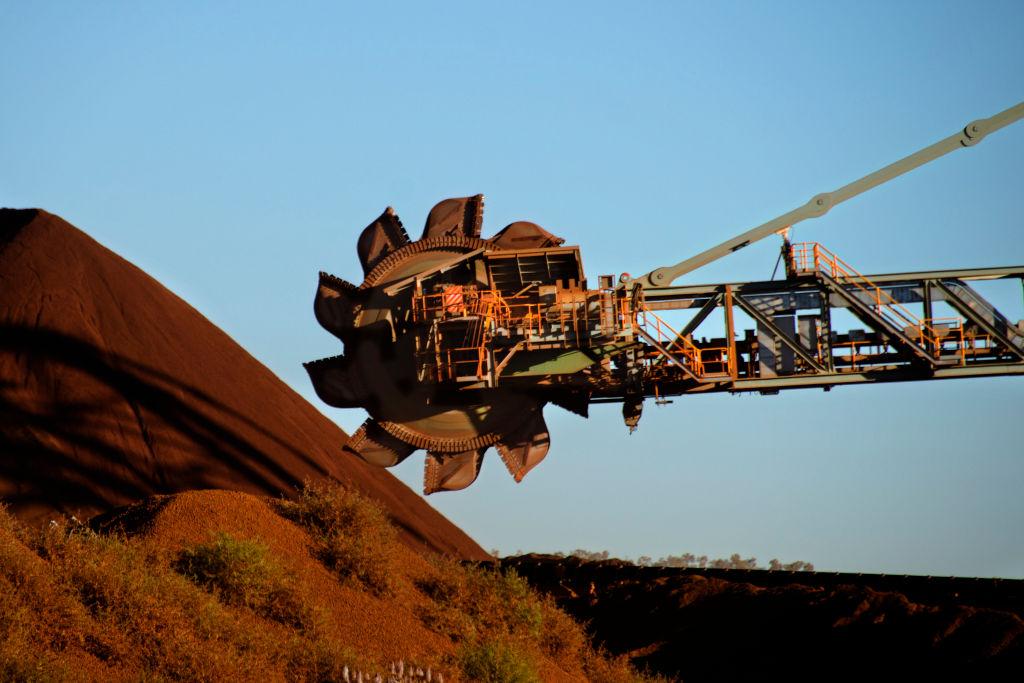As China’s housing market slumps, Australia’s iron ore budget bonanza is unlikely to last
Posted By David Uren on February 2, 2024 @ 06:00

The grim state of China’s housing market has so far had little effect on the iron ore price because its steel mills are diverting their surplus output onto export markets where they are adding to what the OECD says is a crisis of excess steel supply.
While the Australian budget is reaping a bonanza, Western steel mills, including Australia’s Bluescope Steel at Port Kembla and the Whyalla Steelworks, are coming under pressure.
Steel has for decades been one of the most politically sensitive international markets and the surge in China’s steel exports will contribute to an increasingly acrimonious international trade environment over the year ahead.
China’s mills shipped 90 million tonnes of steel to export markets last year, a 36% increase from the previous year and the highest since 2016. China’s steel exports were equivalent to Japan’s total steel production.
‘The ongoing steel excess capacity crisis is currently escalating,’ the OECD [1] said in a review of the industry. The 57 million tonnes of new capacity added last year was the highest in a decade, despite actual sales of steel falling 2.5%. China accounted for just under half the new capacity while Chinese mills are also investing heavily in new capacity in ASEAN nations.
‘The bleak outlook for steel demand and the increasing relocation of steel capacity from China to other regions create a worrying outlook for the coming years. This is also a major obstacle to achieving steel decarbonisation targets,’ the OECD report said.
The state of China’s steel industry is one of the most important external influences on Australia’s economy: Treasury estimates that every US$10 shift in the iron ore price translates to $2.5 billion in the Australian economy and $500 million for the federal budget.
Treasury had expected the iron ore price to drop to an average of only US$60 a tonne over the first three months of this year because of the housing downturn but instead it has been holding above US$130 since November.
China’s official figures showed its steel production collapsing in December, however they were widely dismissed. The Financial Times [2] cited a leading analyst declaring: ‘It is fair to say that we don’t believe these numbers’, arguing there had been no corresponding fall in coke production, which is a key steel input. Nor was there any tell-tale weakness in iron ore prices, which surged from US$105 a tonne in August to average around US$135 a tonne throughout December.
The reason for putting out false steel production numbers would have been to keep annual production within the 1 billion tonne limit set in the latest five year plan which took effect in 2021.
This commitment was made partly to honour China’s pledge to cap its carbon emissions by 2030 and achieve carbon neutrality by 2060. It was also made at a time when the relentless expansion of China’s steel industry had pushed the iron ore price above US$200 a tonne, which Chinese authorities believed was extortionate.
Last year, as the downturn in the housing industry intensified, the Chinese authorities appeared to loosen the reins on steel producers, encouraging them to export what they could not sell domestically. China’s steel production looked like surpassing 1.05 billion tonnes before the suspicious December dive.
Under the five year plan, the steel mills had to shut down 1.15 million tonnes of old and inefficient capacity for every 1 million tonnes of new capacity they built. However, the closures did not keep pace with newly built mills last year.
The default response of the Chinese authorities to weakness in their domestic economy is to encourage investment aimed at export markets. ‘Investment not only generates immediate demand, but also serves as the true driving force for growth,’ an article in an official Chinese journal cited by the Wall Street Journal [3] said.
By contrast, China has rejected the sort of household stimulus favoured by Western economists to counter downturns. In an article published in the Chinese Communist party’s Qiushi journal in 2021, Xi warned of the limits to state support and of ‘falling into the trap of nurturing lazy people through welfarism’.
These priorities have resulted in China having a unique economic structure: investment represents about 43% of China’s GDP, compared with a global average of 25%. By contrast, consumption is just 37% of GDP, against a global average of 62%.
Economist Michael Pettis [4] points out that China represents just 13% of global consumption but 32% of global investment. Globally, every dollar invested needs to be supported by $3 of consumption, but in China, households only take $1.30 for every dollar invested with the rest of the world taking the remainder. Pettis says that for China to keep increasing its investment without producing unsaleable surpluses, the rest of the world would have to cut its investment.
With many nations, including the US, the European Union, India and Australia, seeking to rebuild their manufacturing—decimated by years of cut-price Chinese competition—this is most unlikely.
Republican presidential contender Donald Trump is promising a blanket 60% tariff on all Chinese goods. US steel states like Pennsylvania and North Carolina will be key battlegrounds in this year’s presidential election, so new trade barriers are likely. The European Union is also increasingly focused on the size of China’s trade surplus.
Steel is only one front in this emerging conflict. The same dynamic is at work with electric vehicles, batteries, solar panels and wind turbines.
Australia should enjoy its iron ore-derived budget bonanza while it lasts, ideally trying to bank some of it. It may survive China’s housing downturn, but not a serious trade war.
Article printed from The Strategist: https://aspistrategist.ru
URL to article: /as-chinas-housing-market-slumps-australias-iron-ore-budget-bonanza-is-unlikely-to-last/
URLs in this post:
[1] OECD: https://www.oecd.org/industry/ind/latest-developments-in-steelmaking-capacity-2024.pdf
[2] Financial Times: https://D8F0491F-2CDB-4C7C-B234-EDA6E839669D/Financial%20Times
[3] Wall Street Journal: https://www.wsj.com/world/china/communist-party-priorities-complicate-plans-to-revive-chinas-economy-84a156d7
[4] Michael Pettis: https://carnegieendowment.org/chinafinancialmarkets/91161
Click here to print.